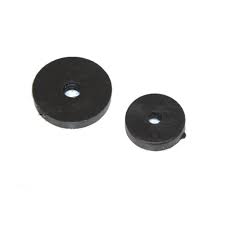A Guide To Tap Washers:
Types, Signs And Replacement Steps.
Tap washers are essential components that ensure your taps work efficiently by preventing water leaks. Over time washers can wear out, leading to dripping taps and water wastage.

Signs of faulty tap washers.
Difficulty in turning the tap off.
Dripping or leaking taps.
Strange noises when turning the tap on or off.
Types of tap washers.
Rubber washers: These are common and affordable, suitable for most household taps. It may need to be replaced regularly.
Nylon washers: These are durable and less prone to wear. It does not need to be replaced yearly.
Ceramic disc washers: These are often found in modern taps offering longevity and smooth operation.
How to replace a tap washer in 10 steps:
- Turn off the water supply.
- Plug the sink to avoid losing small parts.
- Remove the tap handle (use a screwdriver if needed).
- Unscrew the tap bonnet to access the washer.
- Take out the old washer.
- Match it with a new washer of the same size.
- Fit the new washer in place.
- Reassemble the tap.
- Turn the water supply back on.
- Test the tap for leaks.

5 Benefits of replacing a tap washer:
- Water conservation: Stops leaks and prevents unnecessary water wastage.
- Cost savings: Reduces water bills by eliminating dripping taps.
- Improved tap functionality: Ensures smooth operation and easier turning of taps.
- Prevents damage: Avoids potential water damage to surrounding areas caused by persistent leaks.
- Eco-friendly: Promotes sustainable water use and minimizes environmental impact.
You will need:
Cloth

